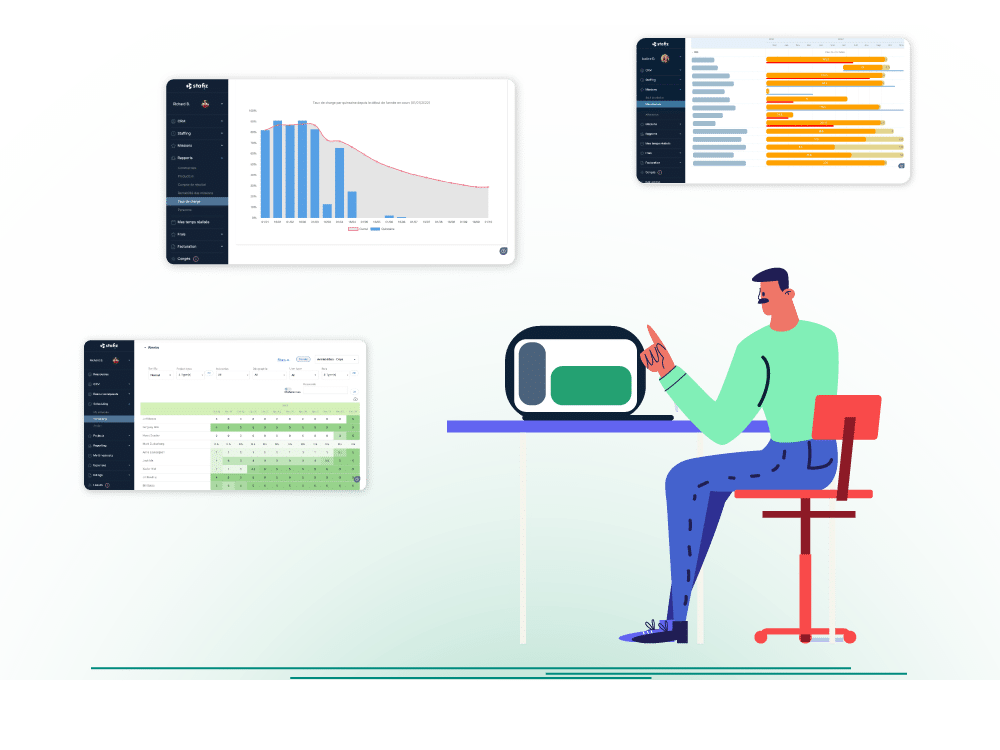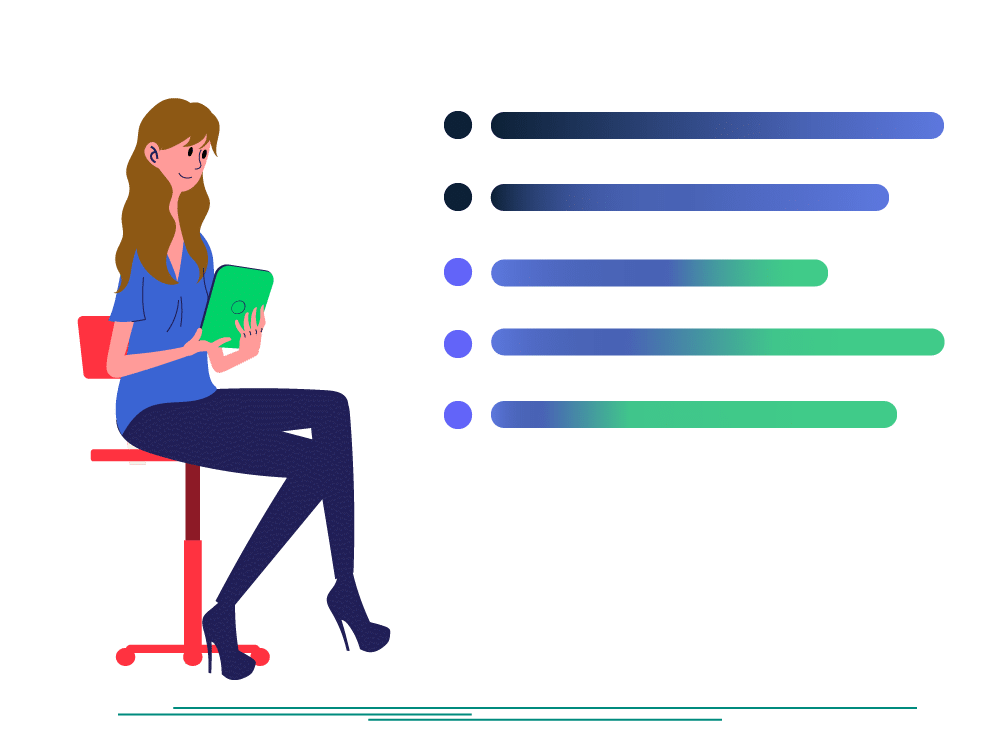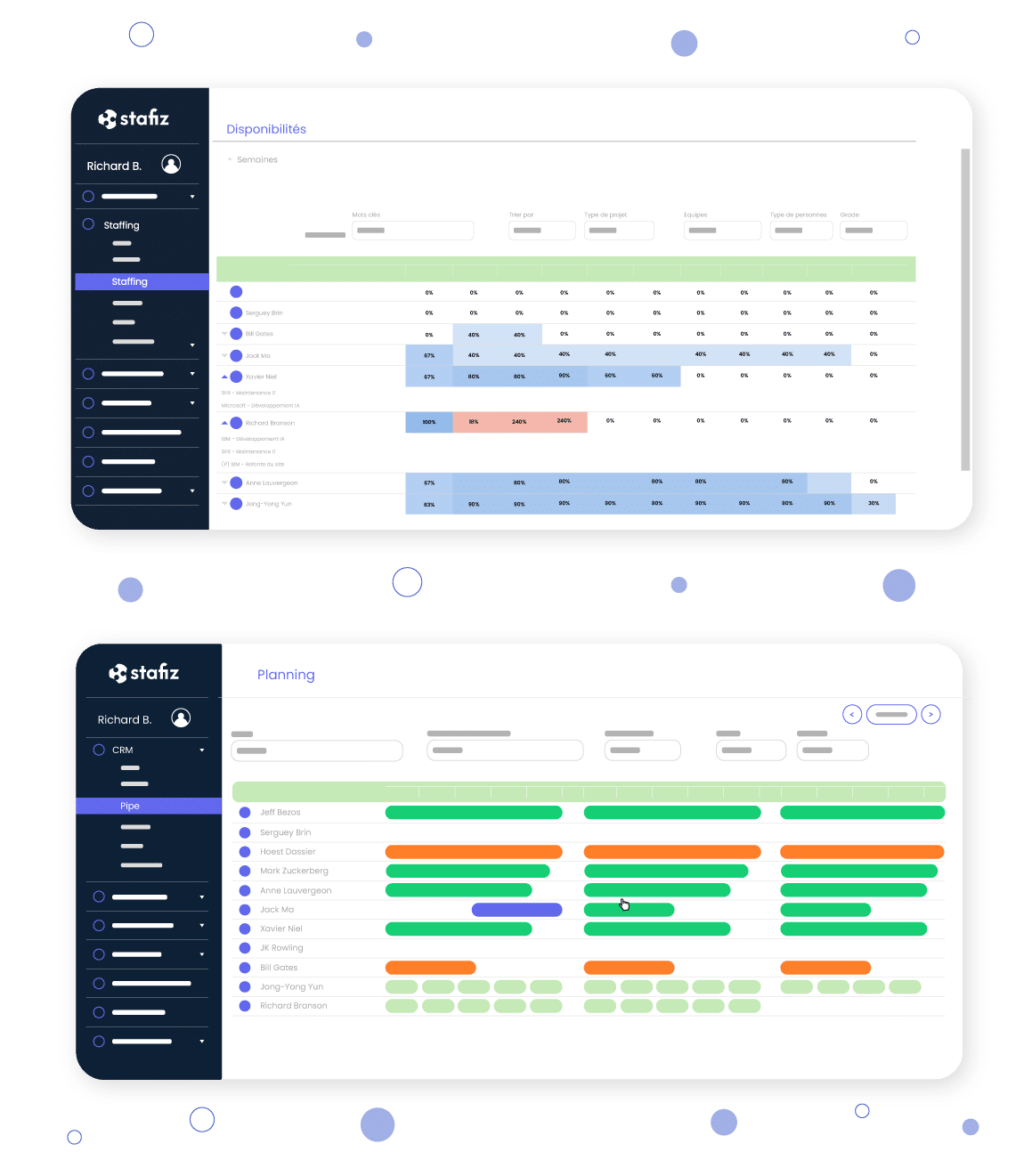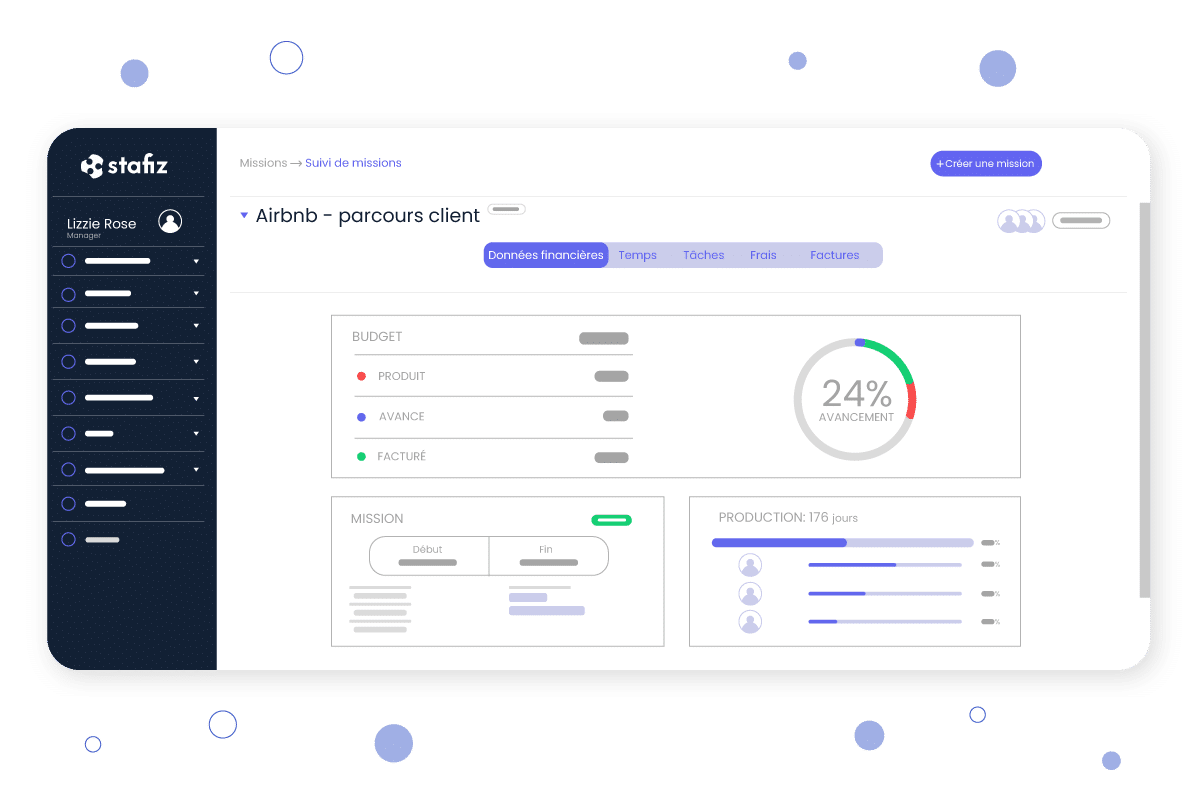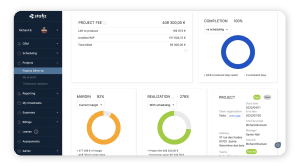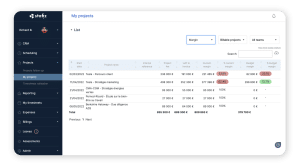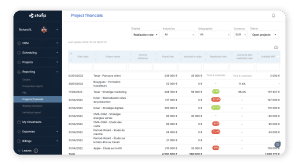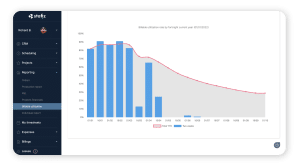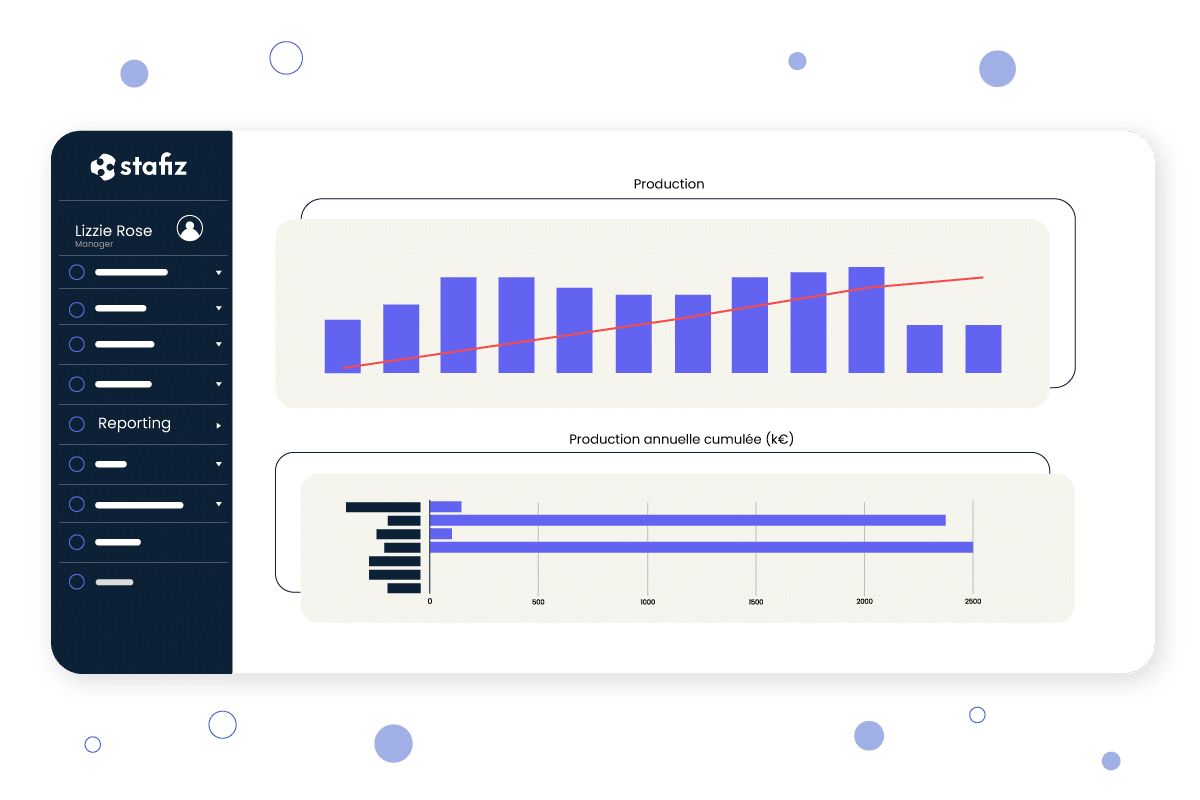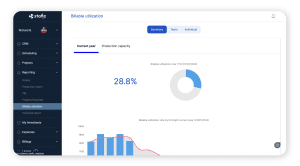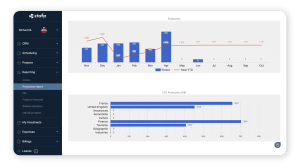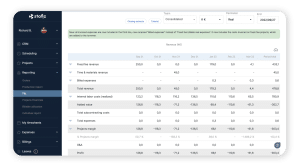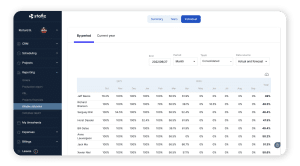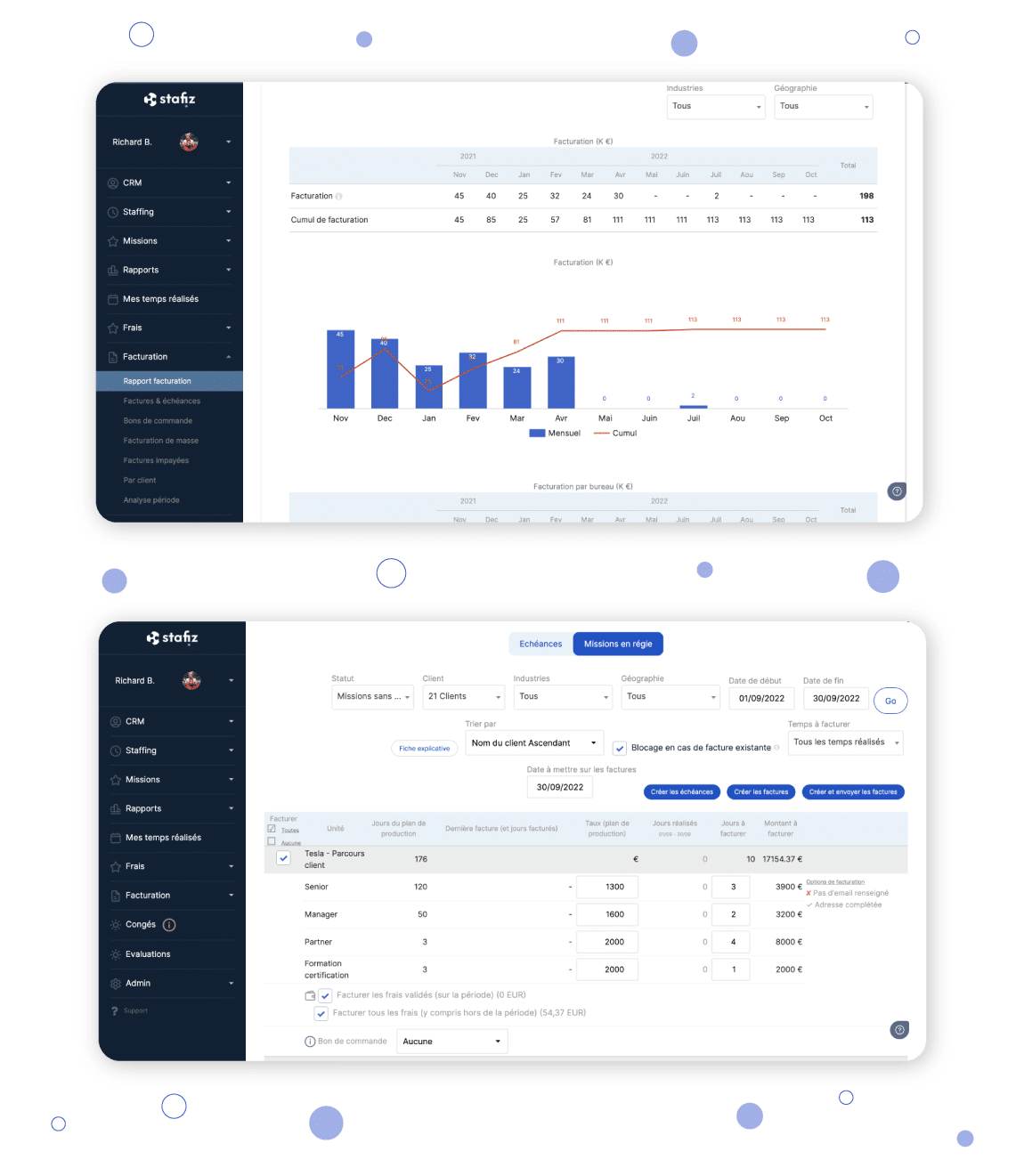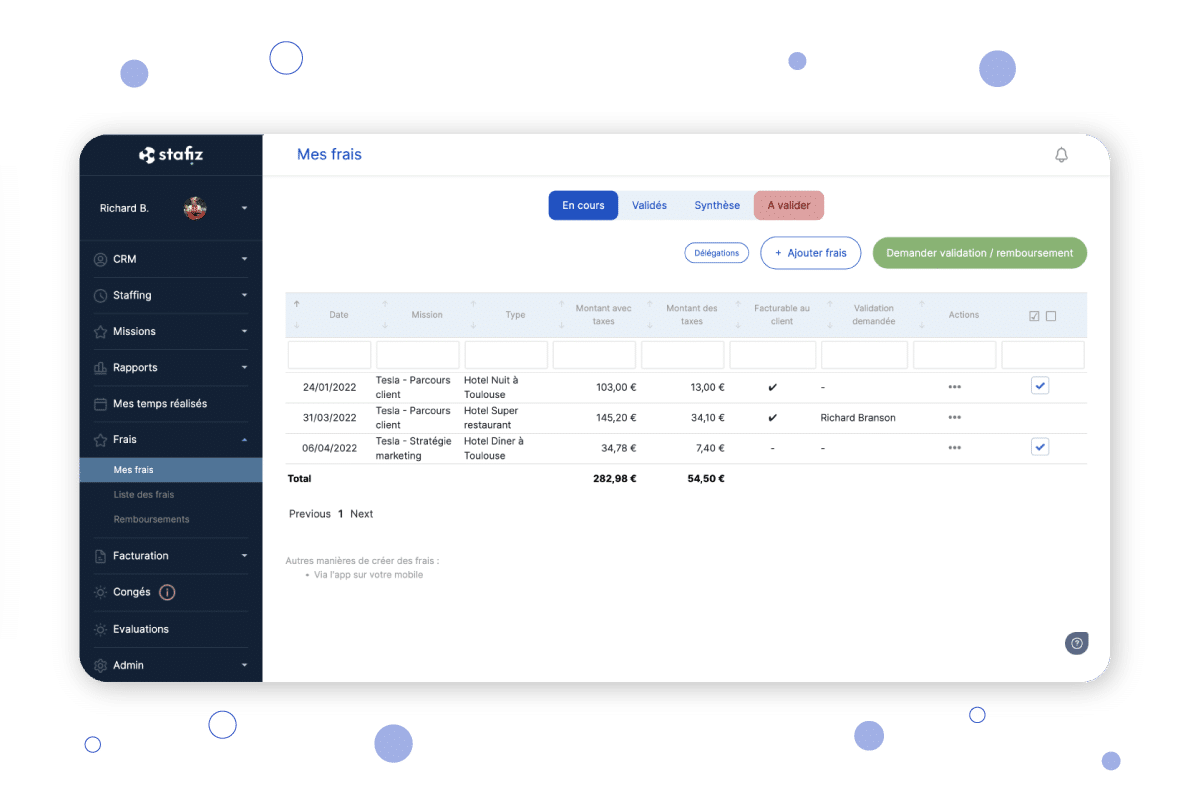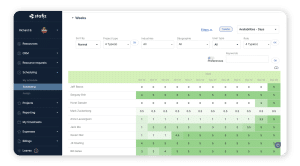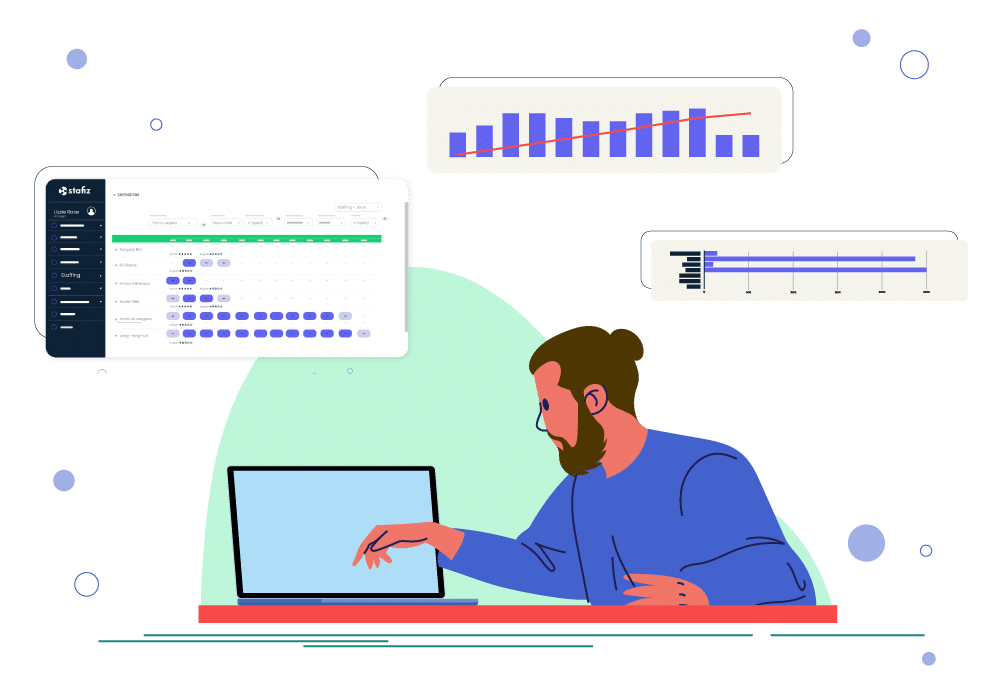The advantages of an ERP for professional services companies
All teams save time in their work when an ERP is implemented:
– Employees find all their actions in the same tool. Depending on their rights, they have access to their projects, their time tracking, their schedule, their expense and absence management. Beyond the time saved by finding everything on a single platform, the employee experience is also simplified
- Support teams, finance teams and management perform their monitoring, validation and control tasks on a single platform. Notifications and tasks are centralized, which makes it possible to move forward more quickly
A service company that uses an ERP adapted to its business increases visibility on its performance tenfold.
Accurate knowledge of project margins. Anticipation of projects that are deviating from their budgets. Visibility into utilization rate of employees (time spent on billable projects).
The numerous indicators on the past and projected performance of the company allow to quickly improve the situation by knowing where the improvements are, and gaining anticipation in the decisions.
ERP in a service company connects all the teams, but also the stakeholders of the projects the company is working on. ERP is a central solution on which all stakeholders connect and share information. This connection brings efficiency in the work and better quality to projects.
